Wing Commander Vance Drummond
Vance with his aircraft in Vietnam, nicknamed “Snoopy”, 1966. (Gerald Wallace Westbury)
The night was bitterly cold, but Pilot Officer Vance Drummond knew that if they wanted to escape the North Korean prison camp, it was now or never. As Vance and his four mates slipped through the barbed-wire fence, they knew they were taking a big risk. They hoped it would be worth it.
Vance Drummond was born in Hamilton, New Zealand on 22 February 1927. He and his three brothers were all interested in flying. During the Second World War Vance’s eldest brother, Frederick, enlisted in the Royal Australian Air Force (RAAF) at 18, but lost his life less than a year later. Vance joined the Royal New Zealand Air Force (RNZAF) in 1944. By the time he finished training, the war was nearing its end, and he was demobilised. In March 1946 Vance enlisted in the New Zealand Army and served in Japan as a member of “J” Force. This was New Zealand’s contribution to the British Commonwealth Occupation Force, helping to maintain law and order and rebuild Japan.
After he moved to Australia, Vance joined the RAAF. In August 1951 he was posted to No. 77 Squadron in Korea. Despite having received only limited training in air combat, he was awarded the US Air Medal for his “courage, aggressiveness and tactical skill” during aerial combat missions.[1]
On 1 December, Vance’s Gloster Meteor Jet was one of three shot down by enemy MiG-15 fighter jets. One pilot was killed, but Vance and Flying Officer Bruce Thomson ejected from their aircraft safely and parachuted into North Korea. They were captured, held in a nearby town, and interrogated for six days. They were then sent to Pinchon-ni prisoner-of-war camp, where they were relieved to see the familiar faces of fellow Australians Flight Lieutenant Gordon Harvey and Flying Officer Ron Guthrie. Vance’s family did not hear of him becoming a prisoner until months later.
Ivor Hele, Return of the Meteor jets, Kimpo, Korea (1953, oil on hardboard, 78.5 x 122 cm). The RAAF used Meteor jets in Korea. Unfortunately, they were no match for the faster, lighter enemy aircraft, the MiG-15.
Life in the camp was difficult. The prisoners were treated brutally by the guards, received inadequate food, medical treatment, and clothing, and were forced to do heavy labour. They faced extreme cold, with temperatures dropping to minus 20 degrees Celsius at night.
Eventually, Vance, Thomson, and three Americans decided to escape. Gathering emergency rations, compasses, and water bottles, they prepared for their breakout. On the night of 11 April 1952, dressed as North Koreans, the group escaped the compound. For two nights they made good progress, but were eventually spotted and recaptured. The men were harshly punished, and were tried before a North Korean military court.
After nearly two years as a prisoner of war, Vance was repatriated to Australia in September 1953. A fellow Australian, Army officer Maurie Pears, spoke highly of those men who had been held as prisoners, saying that “while in captivity, [they] fought battles of their own with great honour and individual courage”.[2]
Six RAAF pilots were prisoners of war in Korea, including (left to right) Flight Lieutenant Gordon Harvey, Pilot Officer Bruce Thomson, Sergeant Don Pinkstone, Pilot Officer Vance Drummond, Flight Lieutenant John Hannan, and Flying Officer Ronald Guthrie. They all flew home to Sydney together in 1953.
After the war, Vance married Margaret Buckham. Promoted to squadron leader, he took charge of No. 75 Squadron’s “Black Diamonds” aerobatic display team. They performed around Australia, including at the 1962 Commonwealth Games in Perth. For his service in the RAAF Vance was awarded the Air Force Cross.
Vance served with the US Air Force for two years, including a combat tour of Vietnam. His leadership in the air and support of ground forces earned him the Distinguished Flying Cross and the South Vietnam Cross of Gallantry with Silver Star.
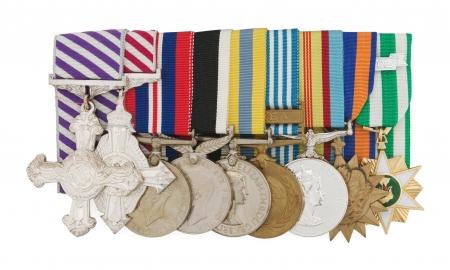
Vance Drummond’s medals include (left to right) the Distinguished Flying Cross, Air Force Cross, British War Medal 1939–45, New Zealand War Service Medal, Korea Medal, United Nations Service Medal for Korea, Vietnam Medal, United States Air Medal, and South Vietnam Campaign Medal.
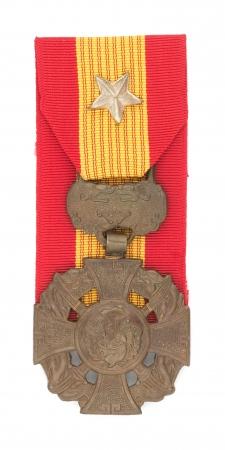
The South Vietnam Cross of Gallantry with Silver Star is mounted separately.
On 17 May 1967, during a training exercise off the New South Wales coast, Vance’s aircraft went into a dive and crashed into the sea. He died instantly. The following year, Margaret took their nine-year-old son, David, to Government House to accept Vance’s Distinguished Flying Cross.
Despite his mistreatment as a prisoner of war in Korea, Vance did not tell his family of his suffering. In a letter to them, after 14 months as a prisoner, he simply wrote:
Just a few lines to let you know I am in good health and to let you know you are constantly in my thoughts … Hoping this finds you all well and praying we will soon be together again.[3]
Activities
- The UN Service Medal for Korea was issued to members of multi-national defence forces who served in the Korean War. The inscription on this medal’s reverse reads “for service in defence of the principles of the United Nations”.
- Research the four principles of the UN. How might service in Korea have been deemed to fit with these purposes? This link to the United Nations website may be useful.
- Twenty-one member nations of the UN supported South Korea when North Korea invaded. Find out who they were on the Anzac Portal
- Debate the following statement: “Australia has a global obligation to assist other countries in times of conflict”.
- Why do you think Australia got involved in the Korean War? This page on the Australian War Memorial provides some background information.
- Has the Korean War officially ended? Find sources that support your view.
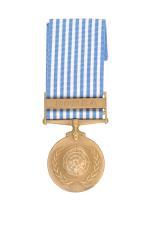
The UN Service Medal for Korea.
- In the photograph below, Vance (left) and Bruce Thomson are wearing blue Chinese prison uniforms during their captivity in North Korea.
- Where are the RAAF pilot “wings” in this photograph?
- Why would Bruce be wearing these on his prison uniform?
- Below are some examples of RAAF brevets (or flying badges). What similarities and difference can you see? Search for each object on the Australian War Memorial's website and identify the role or qualification represented by each brevet. Discuss some reasons as to why the designs have changed over time.
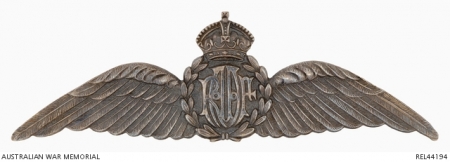 |
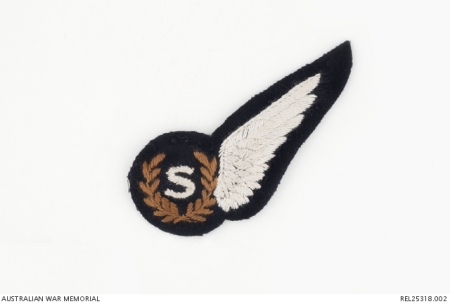 |
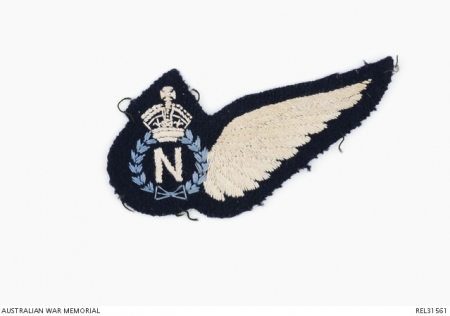 |
 |
- Examine the below photograph of UN prisoners of war in North Korea
- What does the clothing, including the Chinese-issued Korean winter hats, tell you about conditions?
- Propaganda is information that is intended to influence by misleading or misinforming. How might this photograph have been used as propaganda?
- Compare and contrast other examples of wartime propaganda found in the Hearts and Minds resource.
- Before Vance’s mate Ron Guthrie left the camp, he stole this photograph. Why do you think he wanted this image?
- Thirty Australians became prisoners during the Korean War. Find sources that explain what the conditions for prisoners were like.
A North Korean propaganda photograph of UN prisoners of war eating apples at a camp in Pyoktong, North Korea, 1952
Related objects
- United Nations (UN) Service Medal for Korea
- Royal Australian Air Force (RAAF) Wings
- Korean winter hat
- Magnifying glass
Footnotes
[1] Vance Drummond papers, Australian War Memorial, AWM PR85/358.
[2] Maurie Pears and Fred Kirkland, Korea remembered, Australian Army Headquarters Training Command, Sydney, 1998, p. 220. Reproduced with permission
[3] Vance Drummond papers, Australian War Memorial, AWM PR01371.
Bibliography
Col King and Ron Guthrie, Escape from North Korea: the Ron Guthrie story, Meteor, Sydney, 2002.
Maurie Pears and Fred Kirkland, Korea remembered, Australian Army Headquarters Training Command, Sydney, 1998.




